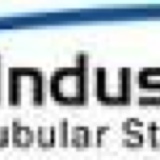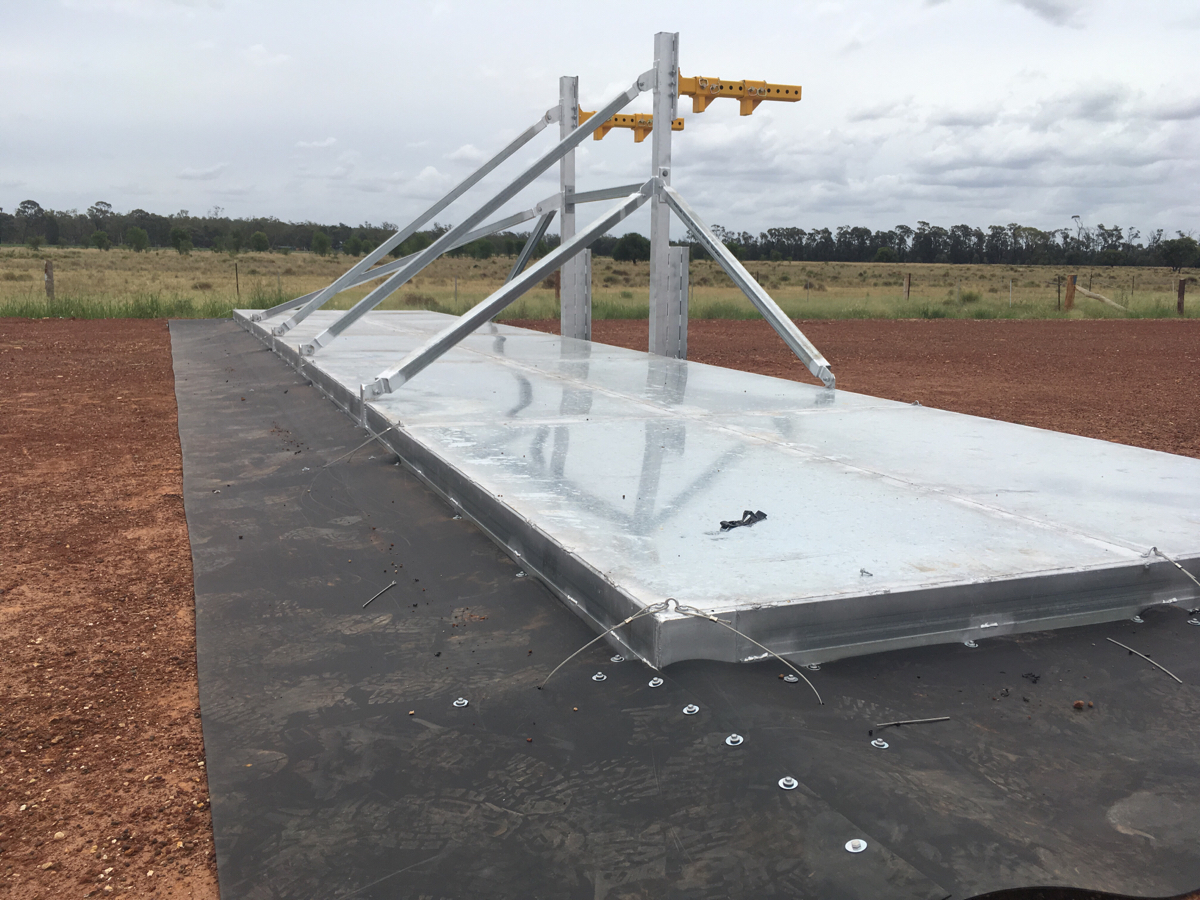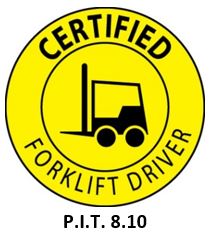Information
-
Client / Site
-
Conducted on
-
Prepared by
-
Location
-
Personnel
Required Posting/Recordkeeping (1904.)
-
Is the required OSHA workplace poster displayed in a frequented area of the workplace where all employees are likely to see it?
-
Is the summary of Occupational Illnesses & Injuries posted in the month of February through April?
-
Are all Occupational Illnesses & Injuries, except minor injuries requiring only first-aid, being recorded on the OSHA 300A Log? (Review the Log)
-
-
-
Portable/Fixed Ladders (1910.26, .27) Safety Manual Document 3.1
-
Are all ladders maintained in good condition, joints between steps and side rails tight, all hardware and fittings securely attached and moveable parts operating freely without binding or undue play?
-
Are non-slip safety feet provided on each ladder and rungs provide good footing?
-
Is a monthly inspection completed for ladders along with employee training on the safe use?
-
Are portable ladders secured when stored to prevent tipping/falling?
-
-
Fall Protection (1910.66)
-
Has a workplace assessment been conducted to determine the need for fall protection?
-
Are fall protection systems used where required?
-
Are body harnesses/lanyards in good condition and inspected monthly?
-
Have employees who use fall protection adequately trained (training documented)?
-
-
-
Exiting or Egress (1910.35, .36, .37) Safety Manual Documents 2.2, 3.8, 3.9
-
Are exits marked with an exit sign and illuminated by a reliable light source?
-
Is there an Emergency Action Plan for weather, fire, and medical emergencies?
-
Are emergency plans communicated to all employees (documented)?
-
Are all exits kept free of obstructions inside and out?
-
Are key personnel trained in responsibilities (documented)?
-
Does the Plan contain an Emergency Call List with phone numbers?
-
Are storm shelters identified?
-
Is accountability of employees established for evacuation purposes?
-
Is their sufficient emergency lighting?
-
Has an annual evacuation and/or severe weather drill been conducted?
-
Are exit doors able to open from the direction of exit travel without the use of a key or any special knowledge or effort when the building is occupied?
Hearing Conservation (1910.95) Safety Manual Document 3.5.1
-
Has a survey been done?
-
Are baseline and annual audiograms being conducted on employees exposed to 85DBA or more?
-
Are records kept for each employee and their results? (Review records)
-
Is the audiogram equipment calibrated annually?
-
Are periodic sound level checks being performed and documented?
-
Are standard threshold shifts (STS) documented and retested?
-
Are employees notified of audiogram results?
-
Do Seneca people receive annual training on noise exposure, effects, precautions, and use of hearing protection (documented)?
-
Are areas of high noise levels (85dba) posted for required hearing protection?
-
Do Seneca people have a minimum of three (3) types of hearing protection to choose from?
-
Are people wearing hearing protection where required?
-
PPE (1910.132, .133, .135, .136) Safety Manual Document 3.5.6
-
Have the employees been trained in the use, maintenance, and limitations of personal protective equipment (documented)?
-
Are protective goggles or face shields provided and worn when mixing and dispensing cleaning solutions?
-
Are approved safety glasses required to be worn at all times when there is risk of eye injury (grinding, drilling, and chipping)?
-
Is eye protection worn throughout production, ag shops and whse areas?
-
Are protective gloves, wet suits, face shields, and foot protection, or other means provided against undiluted cleaning solutions (sanitation, clean up)?
-
Is all protective equipment maintained in a sanitary condition and ready for use?
-
Are steel-toed shoes being used by maintenance, forklift drivers, stackers, and other material handlers where exposure exists?
-
Are bump caps being worn throughout production and whse areas?
-
Has workplace hazard assessment been completed and accurately maintained?
-
Tagout Procedures (1910.147) Safety Manual Document 3.4.3
-
Is all machinery or equipment capable of movement, required to be de-energized or disengaged and blocked or tagged-out during cleaning, servicing, adjusting, or setting up operations, whenever required.
-
Does the Tagout procedure require that stored energy (mechanical, hydraulic, air, etc.) be released or blocked before equipment is locked-out for repairs/sanitation?
-
Is it required that only the employee(s) (or qualified service rep.) exposed to the hazard, place or remove their lockout?
-
Are locks and tags identified?
-
Is a copy of the written Lockout/Tagout Policy on hand?
-
Is an annual documented audit performed to ensure Lockout/Tagout is being conducted as required?
-
Have written procedures been established for locking out each piece and/or similar equipment and are updated when changes occur?
-
Have appropriate employees been adequately trained in lockout procedures?
-
Medical Services and First-Aid (1910.151) Safety Manual Document 3.01
-
Is there a hospital, clinic, or physician designated for injury care?
-
Are first-aid kits equipped for bloodborne pathogens with rubber gloves and antiseptic wipes?
-
Are eye wash stations and safety showers located where chemicals are dispensed, functional, accessible, and checked frequently monthly?
-
Is there first-aid equipment or facilities available for treating minor injuries?
-
Are first-aid cases logged and described?
-
Have people been trained in first aid that renders treatment to the injured?
-
Is light duty concept being implemented and communicated with physician(s)?
-
Are First Reports of Injuries being properly filled out and distributed?
-
Is each injury requiring medical attention investigated thoroughly and promptly?
-
Is post-accident drug/alcohol testing being performed?
-
General Work Environment (1910.141) Safety Manual Document 3.6
-
Are all work sites clean and orderly (good housekeeping)?
-
Are all spilled materials or liquids cleaned up immediately?
-
Are the floors of every workroom maintained in a clean and, so far as possible, a dry condition. Where wet processes are used, is drainage maintained, and false floors, platforms, mats, or other dry standing places provided where practicable?
-
Are hot pipes and equipment in pedestrian traffic areas insulated or isolated?
-
Is combustible scrap, debris, and waste stored safely and removed from the work site promptly?
-
Are all toilets and washing facilities clean and sanitary?
-
Are all work areas adequately illuminated?
-
-
-
Fire Protection (1910.157, .159) Safety Manual Document 3.7
-
Are fire extinguishers serviced annually and monthly inspections noted on the inspection tag?
-
Is fire extinguisher training provided to employees, who may be required to use extinguisher, on an annual basis (documented)?
-
Are extinguishers easily accessible and not obstructed?<br> (ordinary combustible 75 feet, high combustible 50 feet)<br>
-
Is sprinkler system (valves) locked in open position, secured, or provided with outside monitoring system for alarm and tampering purposes?
-
Do sprinkler heads have a minimum clearance of 18”?
-
Material Handling (1910.178) Safety Manual Document 3.3.1, 3.3.5
-
Are drivers utilizing seat belts?
-
Are containers/corrugate stored, stacked, blocked and limited in height so they are stable and secure?
-
Are vehicles shut off and brakes set prior to loading or unloading?
-
Are vehicles being loaded/unloaded by forklift choked or dock locks utilized?
-
Are forklifts maintained in safe operating condition?
-
Are forklift drivers trained initially and refresher training every 3 years minimum?
-
Are daily forklift checks being conducted and documented?
-
Do electric forklift charging areas have acid neutralizers, immediately available fire protection, and adequate ventilation?
-
Are Propane tanks in good condition and stored properly
Machine Guarding and Safety (1910.219) Safety Manual Document 3.5.9
-
Are guards secured to equipment?
-
Are compressors and other pressure vessels equipped with pressure relief valves and gauges?
-
Are emergency stop buttons identified in red?
-
Are nip points, shear points, couplers, point of operation, gears and chains guarded?
-
Are all corners and edges of guards smooth and do not present a hazard itself?
-
-
-
Hand Tools and Equipment (1910.242, .243, .244)
-
Are all tools and equipment used by employees in the workplace in good condition?
-
Are broken or fractured handles on hammers and similar equipment replaced promptly?
-
Are guards utilized on powered hand grinders?
-
Are appropriate handles used on files and similar tools?
-
Are non-double insulated tools grounded?
-
Is compressed air for cleaning limited to 30 psi or equipped with safety nozzle?
-
Are load ratings identified on hoist and jacks along with safety clips on hooks?
-
Are Hoists and slings inspected?
-
Are arm saws arranged so that the cutting head returns back to the back of the table when released?
-
Is equipment anchored in place and made secure?
-
Is the grinder work rest adjusted to within 1/8-inch of the wheel and the tongue guard within ¼-inch and in compliance with other standard items for grinders?
Flammable and Combustible Materials (1910.253, .106) Safety Manual Documents 3.4.5 and 3.4.2
-
Is there proper storage practices to minimize the risk of fire including spontaneous combustion including proper labeling?
-
Are “NO SMOKING” rules enforced in production and warehouse areas?
-
Are compressed gas cylinders secured in place?
-
Are oxygen cylinders stored away from items such as oil, grease, acetylene, and other fuel gas cylinders (20 feet or 5 feet non-combustible partition)?
-
Are flammable liquids and cylinders stored away from radiators, other sources of heat and exits?
-
Does oxygen/acetylene equipment have flashback arresters?
-
Are oxygen/acetylene equipment lines bled off and tanks closed when not in use?
-
Are hot work areas identified throughout the location and hot work permits utilized?
-
Are all bulk drums of flammable liquids grounded and bonded to containers during dispensing?
-
Bloodborne Pathogens (1910.1030) Safety Manual Document 3.5.5
-
Is PPE available to First Responders?
-
Are waste receptacles available and identified?
-
Is training given to First Responders annually (documented)
-
Are vaccinations offered to First Responders? (See the records of those who received shots and denial forms of those who did not.)
-
-
-
Hazardous Communication/Chemical Exposure (1910.1200) Safety Manual Document 3.5.3
-
Are employees aware of the potential hazards involving various chemicals stored or used in the workplace? (Review training signature sheet.)
-
Are all containers, such as drums and mixing tanks, etc., labeled as to their contents?
-
Have standard operating procedures been established and are they being followed when cleaning up chemical spills?
-
Are Seneca people trained initially and annually in chemical hazards, symptoms, first-aid, precautions, labeling and other OSHA requirements?
-
Are Material Safety Data Sheets (MSDS) readily available for each hazardous substance used? (Select a product and ask for MSDS)
-
Is there a listing of hazardous substances used in the workplace?
-
Has the Process Safety Analysis been reviewed and updated every 5 years?
-
Was GHS training performed and documented?
-
Are SDS update according to GHS?
-
Safety and Health Program – Safety Manual Documents 2.0 an 2.1
-
Are JSA’s completed for each job, reviewed annually, and available in Spanish?
-
Are safety memos, statistics, new policies, and emergency plans posted for employees to review?
-
Is there an active Safety Committee meeting monthly with appropriate representation?
-
Are safety committee meetings frequent enough and do they cover appropriate information? Review minutes
-
Do people receive safety orientation on the hazards of their job (documented)?
-
Do people acknowledge orientation by signing an Orientation Form?
-
Is the STOP program being properly administered (tracking, awards, training) at your location?
-
Is there prompt response for Safety Audits and insurance company visits/recommendations?
Walkways/Railings (1910.23) Safety Manual Document 3.1
-
Are aisles and passageways kept clear, identified, and crosswalks visible to area traffic?
-
Are holes in the floor, grates, sidewalk, or other walking surface repaired promptly, covered or otherwise made safe?
-
Are all rugs or floor coverings in good condition and without holes or trip hazards?
-
Are pits and floor openings covered or otherwise guarded?
-
Are railings provided where there is a drop from one elevation to another?<br> (railings – 42” high with midrail – toe board for people exposure below.)<br>
-
Electrical (1910.303, .304) Safety Manual Document 3.4.4
-
Are electrical appliances and equipment grounded?
-
Do extension cords being used have a grounding conductor and in good<br> condition and used only as a temporary device?<br>
-
Are all disconnecting switches and circuit breakers labeled to indicate their use?
-
Are the requirements of the NFPA 70e being met (ppe, training labeling)?
-
Is there sufficient space (3 feet) to access power/disconnect panels?
-
-
Process Safety Management (1910.119) Regulated Chemical(s)
-
Has initial and refresher training (3 yrs) been provided to operating employees?<br> (Review training records)<br>
-
Is there written procedures to maintain the mechanical integrity of the equipment?
-
Is there written operating procedures for the process?
-
Has a compliance audit been conducted in the last 3 years to verify that procedures<br> and practices are still adequate and being followed? <br>
-
Are hot work practices followed when working on or near the process?
-
Is there a complete and a compiled plan covering the PSM requirements?
-
Is the plan reviewed and updated (if needed) every 5 years, quarterly by mgmt?
-
Has a process hazard analysis been completed and documented within 5 years? What methodology was used
-
Is there an emergency plan and trained response team for chemical releases?
Respiratory Protection (1910.134) Safety Manual Document 3.5.2
-
Is annual training being conducted for the type of respirators being used?<br> (In accordance with Seneca’s policy.) <br>
-
Are users properly fitted with appropriate respirators?
-
Are monthly checks being conducted on respirators used for emergency purposes?
-
Are respirators stored in a clean/sanitary location?
-
Is an annual pulmonary function test being conducted for users of respirators?
-
Has IH study been performed for hazardous areas to determine exposures
Confined Space Entry - Safety Manual Document 3.4.1
-
Are confined spaces identified and posted?
-
Are employees that are required to enter confined spaces and standby rescue people trained?
-
Are entry permits being properly used?
-
Are actual and potential hazards of each confined space identified along with written entry procedures?
-
Are protective measures identified and communicated to employees? (PPE, ventilation, etc.)
-
Are rescue procedures communicated with employees and outside services along with conducting non-entry mock rescue drills? (Fire & Rescue)
Air Monitoring (1910.1000) Safety Manual Document 3.5.7
-
Is personal and/or environmental monitoring being conducted for carbon monoxide and other known chemicals in the work place that employees are exposed to?
-
Are forklift emissions checked regularly for excessive CO discharge?
-
Are records kept on file of all air monitoring/testing/training?
-
-
Hoist and Lifting Equipment (1910.179) Safety Manual Document 3.5.10
-
Are employees who utilize overhead hoist trained in the safe use and care of the equipment
-
Are monthly inspections of overhead hoist completed with documentation?
-
Are load ratings identified on hoist and jacks along with identified controls with safety clips on hooks?
-
Is rigging equipment (slings/chains/wire rope) free from damage and defects?
Fleet/Ag Safety
-
Are field crews properly equipped with first-aid supplies?
-
Have operators of harvesting equipment been trained in the operation and sanitation procedures?
-
Is field harvesting equipment properly marked with slow moving vehicle signs and do they have adequate nighttime visibility (flashers, reflective tape)?
-
Does each car, truck, and pickup carry current insurance cards?
-
Are seatbelts being used (observation) in company vehicles?
-
Are vehicle equipped with monitoring devices such as telematics
Misc/Other Recommendations
-
Are AED’s used and maintained in accordance with Seneca’s requirements?
-
Are AED’s checked monthly and documented?
-
Have safety goals (Road Map to Safety) been developed and reviewed/updated annually?
-
Maintenance workers/welders training in Hex Chromium hazards (Stainless welding)?
-
Is there an established Yard Safety Policy in place/implemented that meets the company’s objectives (review plan).
-












